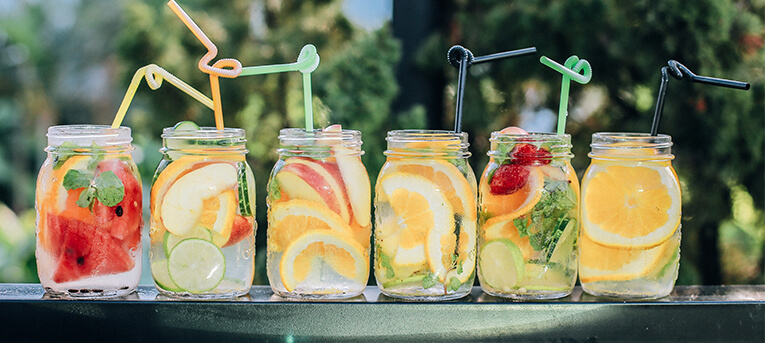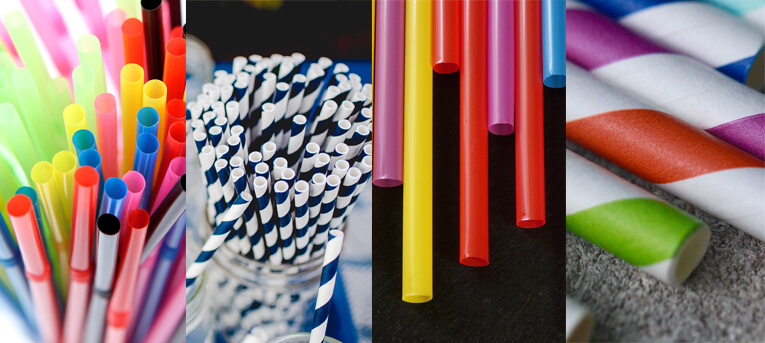2018 has not been kind to plastic straws. The restaurant and hospitality industries are being encouraged to change the way they use single-use plastic products like straws (“500 million straws are used and discarded every day in the U.S. alone”). In response, many corporations are coming up with alternatives and plans to change the way they use straws.
In 2015, a video was uploaded to YouTube named ‘Sea Turtle with Straw up its Nostril – “NO” TO PLASTIC STRAWS’ by Texas A&M Ph. D. candidate, Christine Figgener. This video has over 32 million views on the YouTube platform, not counting Facebook or other social media views. Although it wasn’t the first, this viral video put a face on the issue of single-use plastic items and raised awareness about the consequences that aren’t considered after a piece of plastic lands in a landfill, ocean, or beach.
Many restaurant owners are being faced with purchasing questions that they will need to answer. Single-use plastic has long been used in the restaurant and hospitality industries religiously for the past fifty years. It can seem difficult to find alternatives, but not impossible.
What’s the issue?
Plastic straws (used in homes, restaurants, etc.) are turning up in the ocean and harming wildlife while also adding themselves to heaping piles of garbage that can’t be recycled.
What are other companies doing about straws in their restaurant?
Food industry behemoths like Starbucks and McDonald’s were some of the first to make headlines in the fight to abolish straws. Starbucks is looking to ditch plastic straws for their strawless lid cup in all locations by 2020. McDonald’s is banning single-use plastic products in their U.K. and Ireland locations while also testing plastic straw alternatives in the U.S. Other players like Aramark, Hyatt Hotels, Fox Restaurant Concepts, Eataly, Shoney’s, the Four Seasons Hotel group, and even Ikea are just a few of the food/hospitality companies are in the process of or have promised to change their straw policies.
What do restaurant owners need to consider?
Consider where your restaurant is. Cities like Malibu and Seattle have already passed ordinances banning plastic straws, forcing restaurant owners to offer an alternative.
Don’t forget to look at your menu. Could you save money by reducing straw distribution? Could you serve your mixed drinks without cocktail straws? Are there alternatives you could use instead? Read on…
What can I do in my restaurant?
If you’re thinking about making the switch from plastic straws to an alternative, here are some options to consider. There are pro’s and con’s to each alternative so it’s important to choose what is right for your business model and menu.
Sippy-type cup (aka no straws)
Getting rid of straws all together in larger companies seems to be the way of larger corporations (like McDonald’s and Starbucks). While this may seem like a grand and great gesture, it’s also a major point of contention for people with disabilities. Many people with disabilities rely on straws to avoid aspirating liquid into their lungs. Another issue with the strawless lid is the additional plastic that goes into their production. Although no straw is needed in this redesigned lid, the new recyclable lids actually have 0.32 or 0.56 more grams of plastic product than the current lid and straw combo. While this lid is recyclable, it’s still likely to end up in a landfill or in the ocean.
Paper straws
The biggest complaint? The straws get soggy and collapse after a couple sips. The key to finding a good paper straw is to have one made with higher quality materials. Straws from companies like Indiana-based Aardvark focus on materials like special paper with a cleaner carbon footprint and a food-grade safe adhesive to maintain a quality straw. Paper straws are pricier but reduce the plastic consumption. This will hopefully be a better alternative in the future as the technology becomes more widespread.
Metal straws
Not a bad solution, in fact it may be a great one for dining-in situations as they are a little expensive. By using metal, this alternative basically becomes part of your silverware set. If you plan on using this type of straw, opt for those with a bend in them, an important characteristic for customers with mobility issues. The drawback? You may want to also invest in another alternative such as compostable or paper straws for your take-out orders.
Pasta straws
They may be firmer than paper straws and less bendy than plastic straws, but pasta straws don’t have all the answers. These can get soggy and don’t work for customers who have a gluten sensitivity or Celiac disease.
Compostable straws
These straws have a very similar consistency to plastic straws but are compostable, meaning if they reach a landfill, they will break down. It’s important to note that these straws can be 70% more expensive traditional plastic ones, causing business owners to cringe at this alternative.
Available upon request
For independent restaurants where the decision-making lies with you or your general manager, having straws be available on request can lessen the straws given out. Most people use straws because they are handed one, making them just another step in the dining process. If customers have the need or desire to have a straw, having them available only upon request will cut down on those who just use a straw for convenience. And in the same move, you are still providing an option for those who have mobility issues. Having straws available upon request could also help you save money since you’ll be cutting back on how many you order by not giving them out as freely.
Is your restaurant making moves to sustainably serve your customers? If you are in a straw-banned area, how has it affected your business? Tell us below.
For more information on anti-single-use plastic campaigns, please visit The Last Plastic Straw for more details on what your restaurant can do.







